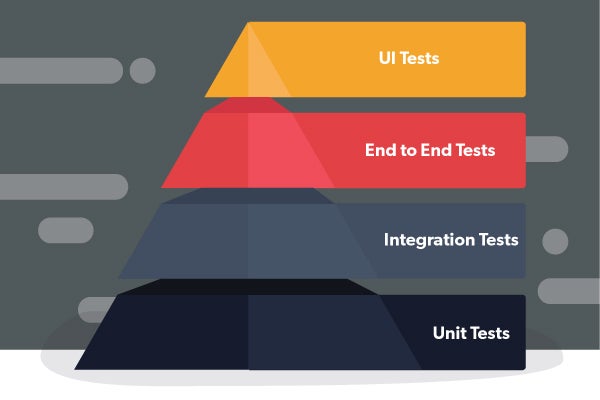Blog
October 10, 2023
Organizations are transitioning to microservices since they enable agility, scalability, and faster time-to-market. And just like any software, microservices require testing to ensure quality and reliability. But when testing microservices, testers and engineers should take into account the dispersed and loosely-coupled nature of this architecture. In this blog post, we provide a comprehensive guide for testing microservices. From the types of tests to run to microservices testing tools to special considerations - this blog post covers it all.
What is Microservices Testing?
Microservices testing is a type of software testing that validates the performance, functionality, and robustness of individual microservices within a microservices architecture and the architecture as a whole.
Microservice architectures are built differently from monolithic architectures. In monoliths, the application is built as a single unit. Microservices, on the other hand, are loosely coupled and built as independently deployable components that communicate over a network. This type of dispersed architecture requires a different approach to testing, one that takes into account the need to test each service in isolation and the entire application.
Microservices testing usually comprises a number of different types of tests:
- Unit Testing - Tests the smallest part of the application in isolation (e.g. each individual method).
- Integration Testing - Validates the interactions between different services or layers within a service.
- Functional Testing - Ensures that the system performs as specified in the defined requirements.
- End-to-End Testing - Validates the system as a whole, often using automated tools to simulate real user behavior.
- Performance Testing - Assesses the system's responsiveness and stability under load.
- Security Testing - Checks for vulnerabilities in the service or in the interactions between services.
- Contract Testing - Ensures that the communication between different services adheres to the predetermined contract or specification.
Microservices Testing Challenges
Microservices architecture is distributed and complex by nature. In addition, microservices were designed to enable agility and continuous delivery, so testing needs to adhere to these requirements as well. These prerequisites create a set of challenges when testing microservices:
- Properly Isolating Services - Microservices often depend on other services to function. These service dependencies make it difficult to accurately isolate a service for testing.
- Performing End-to-End Testing - The large number of interactions between services make end-to-end testing difficult to cumbersome and prone to errors.
- Ensuring the Right Version When Testing - With multiple services being updated independently and simultaneously, ensuring the right versions are being tested against is complicated and tedious.
- Choosing Between Multiple Tools - There are many microservices testing tools available, requiring teams to choose the right platform for the right use case.
- Time-consuming and Costly - Microservices testing can be laborious and expensive if it is not carried out as part of a well-planned process.
- Lack of Visibility - In a distributed system developers and testers do not have visibility into all services and the interactions and flows between them. This makes it challenging to monitor the health of each service and the system as a whole and to create a comprehensive testing suite.
- Inefficient Debugging - Identifying the root cause of issues can be like finding a needle in a haystack, due to the distributed nature of the architecture, the lack of visibility and the intricacy of microservices.
Microservices Testing Benefits
When overcoming the challenges, microservices testing offers several advantages that can significantly improve the quality, reliability, and scalability of an application. Here are some of the key benefits:
- Identifying the Root Cause of Issues - Because each microservice is an independent unit, issues can be isolated and resolved without affecting the entire system. This helps pinpoint the issue and reduces the risk of system-wide failures.
- Faster Time-to-Market - Different teams can test different services simultaneously, allowing for parallel testing cycles. This speeds up the time-to-market for new features and improvements. No need to wait for a Center of Excellence or a QA team to complete testing for the entire application.
- Enhanced Test Coverage - The decoupled nature of microservices allows for focused testing at a higher frequency. This often results in higher test coverage and, consequently, a more reliable application.
- Scalability and Performance - By identifying performance bottlenecks in a specific service, it’s easier to optimize issues and deploy to Production faster.
- Resource Optimization - Testing individual services provides insights into how each service performs, allowing for better resource allocation.
- CI/CD Compatibility - A benefit for testers and DevOps, microservices testing can be integrated into CI/CD pipelines. This enables frequent releases and quicker feedback.
The Testing Pyramid for Microservices
The Testing Pyramid is a concept that helps testers, developers and engineers understand how to plan the different types of tests for a software application. Here's how the pyramid is divided for microservices:

Unit Tests
Tests that verify individual functions, methods, or classes within a single microservice. These tests are fast to run and are conducted at high granularity. This is the most common type of test.
Integration Tests
Tests that verify the interactions between different components within a single microservice or between multiple services..
Contract Tests
Tests that validate that the communication between different services adheres to a contract or specification. This ensures compatibility between services, especially when they are developed by different teams.
End-to-End Tests
Testing the entire application and its interactions with external systems. This is the slowest and most expensive type of test, but it ensures the application will be working in production for users.
In addition, functional, performance and security tests are external to the pyramid, and they are run for individual services and the application as a whole.
Back to topMicroservices Testing Tools
There are a variety of tools available for microservices testing. Here’s a list of some of the most popular ones, categorized by the type of testing they are commonly used for:
Unit Testing
- JUnit - For Java applications.
- NUnit - For .NET applications.
- Pytest - For Python applications.
- Mocha/Chai - For JavaScript, particularly Node.js.
Integration Testing
- Postman - For automating integration testing.
- TestNG - Extends JUnit to provide better support for integration tests.
Contract Testing
- Pact
- Spring Cloud Contract - For Spring Boot applications.
- Swagger and OpenAPI - For API specification and documentation, which can be used to generate contract tests.
End-to-End Testing
- Selenium - For browser-based testing.
- Cypress - For browser-based testing.
- TestCafe - Node.js-based, supports testing in multiple browsers simultaneously.
- Protractor - For AngularJS applications.
Performance Testing
- JMeter - Here’s a tutorial on testing microservices with JMeter.
- Gatling
- BlazeMeter - For performance testing and continuous testing, open-source compatible.
In addition, the following tools are often used to complement microservices testing.
Monitoring and Observability
- APM Tools - Dynatrace, New Relic, Datadog, and more.
- Prometheus - For real-time monitoring and alerting.
- Grafana - Often used in conjunction with Prometheus for data visualization.
- ELK Stack - Elasticsearch, Logstash, and Kibana for searching and visualizing logs.
Service Virtualization
- WireMock - For stubbing and mocking HTTP services.
- Mountebank - Offers service virtualization for testing service dependencies.
- BlazeMeter mock services
CI/CD Integration
It’s recommended to run all types of tests as part of your CI/CD pipeline. This automation and constant frequency will minimize errors and enable you to focus on creating tests, monitoring results and optimizing services. Recommended tools:
Back to topPerformance Testing for Microservices: Considerations
Performance testing in a microservices architecture evaluates the system's responsiveness, stability, and scalability under various load conditions. It identifies bottlenecks and performance issues that could impact user experience and system reliability, so they can be resolved before impacting users.
Here’s a high-level step-by-step process for performance testing microservices:
1. Define performance metrics. Identify the key performance indicators (KPIs) you are tracking, like response time, throughput, and resource utilization.
2. Select tools that can effectively simulate load and measure performance. Consider using JMeter or BlazeMeter.
3. Outline various test scenarios that simulate different types of load conditions. You can use:
- Load Testing - To measure system behavior under normal and peak load.
- Stress Testing - To identify the system's breaking point.
- Spike Testing - To evaluate how the system handles sudden, large increases in load.
4. Generate test data and scripts to simulate the defined scenarios.
5. Execute tests.
6. Observe system metrics in real-time during test execution. Use monitoring tools within the testing tool or APMs to assess whether the system meets the defined performance criteria.
7. Optimize code or scale resources as needed, and then re-run the tests to validate improvements.
8. Integrate performance tests into your CI/CD process using tools like Jenkins to ensure continuous testing.
Back to topBottom Line
Testing microservices is an inseparable part of the day-to-day of many testers and engineers. As more organizations move to the cloud, this requirement is expected to grow as well. It is recommended to educate yourself on how to test microservices for your specific use cases.
Get started with microservices testing with BlazeMeter for free today!
